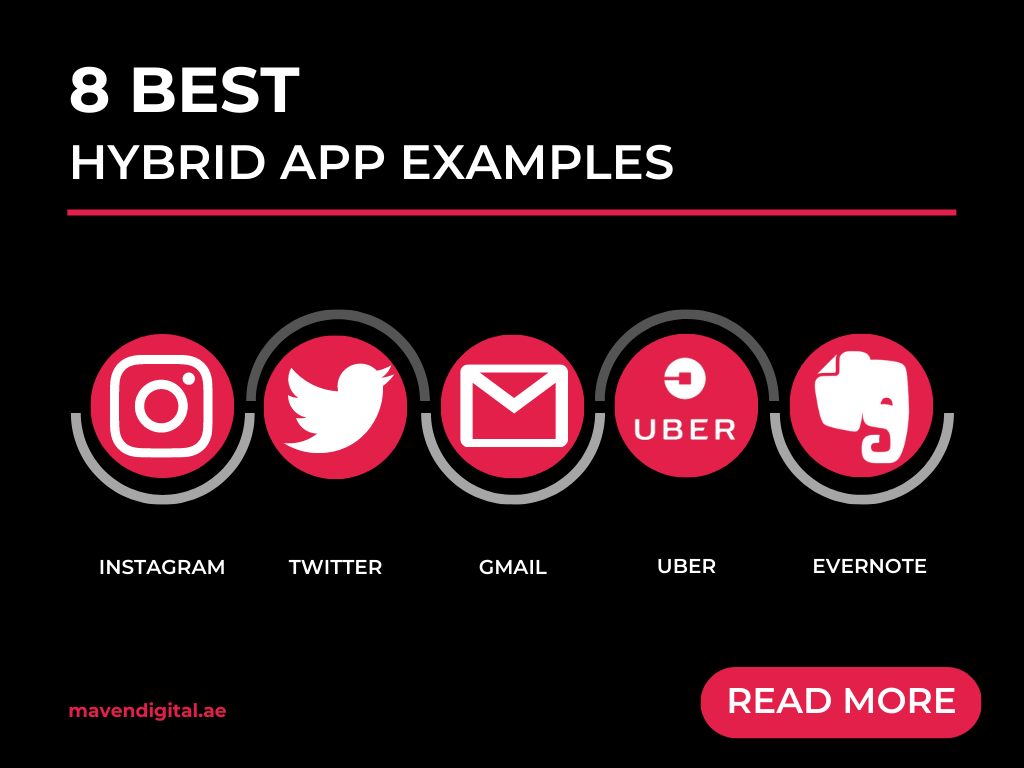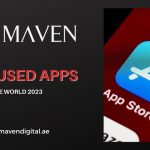Building a mobile app to achieve one or more goals of your business is a brilliant idea, but which app development route should you take? Before we answer this question, let's look at some statistics by Gartner.
Over 50% of medium and large firms will utilize no code/low code app development platforms by 2023. Low-code app development will account for over 65% of all apps developed by 2024.
Enterprises are moving towards low-code or no-code app builders to create their apps. We thought it important to talk about traditional development in the mobile app development industry.
Low code/no code may be the new fashion, but it's only the cherry on top of the cake in terms of quality app development.
Of course, no code/low code app building platforms reduce the costs of hiring more app developers as a non or less technical person can do most of the work.
We think the solution is hybrid app development that reduces costs while maintaining quality. To convince you about the success of hybrid apps, we have made a list of the top 8 hybrid apps. Let's start with the basics.
What Is A Hybrid App?
A hybrid app is an application developed to run on all operating systems. It's developed using a single codebase, which makes it a blended solution having qualities of both web and native apps.
Hybrid applications save developers from having to recode apps within each platform’s programming language. They only have to build one app that users can download from all app stores.
Developers code the app once, and that code works on apple OS and android mobile devices. Hybrid or cross-platform apps use programming languages with extensions and integrations to acquire this functionality.
On the other hand, native app developers have to update the code twice, both for apple and android, if they need to change the app.
It saves money and time in development and maintenance while offering more efficiency to users.
Benefits of Hybrid Applications
Businesses prefer hybrid app development due to its cost-effectiveness. Are you curious why cross-platform apps are so popular among modern corporate organizations? Then stay along as we describe the benefits of these apps.
1- Easy Maintenance
If you are a business with a native mobile app, you likely bear the economic burden placed by your app’s maintenance work. The good news is you can maintain, upgrade and expand your hybrid app without breaking the bank.
Hybrid app developers chill out when Android or Apple launches an update because they can easily update their app with little cost.
2- Interacts with Users More Effectively
Hybrid apps don't need to observe the rules exclusively set by app platforms. Native applications rigorously engage users through push notifications or the type of information within the app.
Hybrid solutions are cutting-edge apps that engage users effectively and offer businesses higher control over their apps.
3- One Code to Write and Update
Developers need to manage only one codebase when they use a hybrid solution. It might mean your company needs to recruit only two developers instead of four as the work decreases.
This example shows how you can reduce development costs by using the route of hybrid app development.
Hybrid App Examples in 2024
1- Gmail
Gmail is among the most commonly used hybrid apps, having reinvented the wheel for the current cross-platform market.
Gmail is a powerful email service solution that has been downloaded millions of times by contemporary businesses. HTML powers this cross-platform application, which is not much usable.
However, the upgrade from HTML to HTML5 has enabled advanced features and functionalities in Gmail, improving user experiences.
Gmail has succeeded in adding HTML to native components within a single app after taking on the mobile version, enabling a streamlined performance.
Core Features
- A clutter-free mailbox to better organize promotional and social messages
- Lets you keep a large number of emails with free 15 gigabytes storage capacity
- Blocks spammy messages automatically before it reaches the user’s mailbox
- Supports multiple accounts
2- Instagram
Instagram is one of the largest social media sites and has experienced a mind-blowing boost over the last ten years, with higher popularity every day.
Millennials love this fun social networking platform and use it to click pictures of all the precious moments of their lives.
Like Gmail, the HTML5 codebase powers Instagram. The application lets you access stored data offline by offering unlimited support to features and content in offline and online mediums.
Core Features
- Allows sending and receiving Direct Messages from any user
- Innovative technology and effects to create engaging stories
- IGTV shows videos that are over one minute in length
3- Twitter
Twitter is another social media channel adored by users worldwide. Its popularity has skyrocketed over the past couple of years.
Twitter is free of all the drawbacks of hybrid applications, which are commonly about functionality problems.
Users often considered hybrid apps slow and less performant, which Twitter changes. The app runs smoothly and loads at lightning-bolt speed, increasing the demand for such solutions among companies.
Core Features
- High-quality live video streaming from mobile devices
- Regular updates of important news
- The ability to share your thoughts via tweets
- Enable users to keep tabs on interesting, and viral events
4- Uber
Uber has positively changed the perception of ride booking in the modern world. You can book a taxi from the comfort of your home via Uber with a few clicks.
Its simple and user-friendly interface helps all people — tech-savvy or not — easily navigate the app. For these reasons, Uber is arguably the king in the online taxi booking service market.
You can install the app from both apple’s app store and google’s play store and use it on almost any device seamlessly.
Core Features
- Shows customer’s location to drivers to make picking up easy
- Shows driver’s photo for easy recognition
- Convenient payment methods like credit and debit cards, digital wallets, etc
- Provide car’s number, color, name, and itinerary for customers
- Integration with Google maps to locate drivers
5- Evernote
Evernote is a premium note-taking hybrid app known for its beautiful layout, superb performance, multi-device sync ability, and native-like user experience.
Its powerful functionalities are second to none. You can click pictures and scan anything with your device’s camera on this app.
Core Features
- Automatically sync valuable data
- Let you design, consider and share your notes and memos with others
- Its widget shows on the home screen, helping you access the app easily and quickly
6- Amazon App Store
Amazon app store is the third hybrid application example powered by HTML5, on our list. Users cherish their experiences on the app with its cool interface, increasing their level of engagement.
Core Features
- Global distribution
- A quick and simple way of checking out
- Includes customer reviews allowing you to get feedback from previous users
- Offers guidance as manuals and videos to solve users’ issues.
7- Apple App Store
HTML5 codebase also powers and develops this hybrid app, making it an excellent solution. Apple app store got a warm welcome from the mobile app development market.
It helps you when choosing native components for the top search bars and bottom navigation, enhancing user experience.
The items you see look exactly like the web views, and the app reloads outputs after every search.
Core Features
- Ideal user experience with the newest apple products
- Lists of premium accessories and products that users can use on all devices
- Suggest apps after reviewing your interest and purchase history
- Apply pay allows you to pay fastly
- Let you track your orders
8- Baskin Robbins
The mere mention of Baskin Robbins makes our mouths water as we all love this ice cream retail chain of shops. The latest version of HTML powers its hybrid application.
It runs as smoothly as a native application and allows offline access with the same features and UI. Despite being a hybrid app, it offers all features you will get in a native one.
Core Features
- Let you order customizable cakes
- Allows you to track locations easily with google map
- Regularly throws discount coupons and offers
- Actively promotes all its deals
- Let you pay directly from the app for each purchase, making the process instant and hassle-free
- Enables you to effortlessly send mobile gift cards to friends and family
Bottom Line
Nowadays, consumers spend most of their time using their devices. A mobile application has become one of the ideal ways of promoting a product/service or business.
A hybrid app development model allows businesses to document the system’s existence, validate its correct working and integrate any required transactional method or data. This boosts their app’s quality and governance.
Maven Digital is a leading mobile app development company that offers a diverse range of app development services. Our mobile applications can help your business take the elevator to success instead of the stairs. Contact us today!








